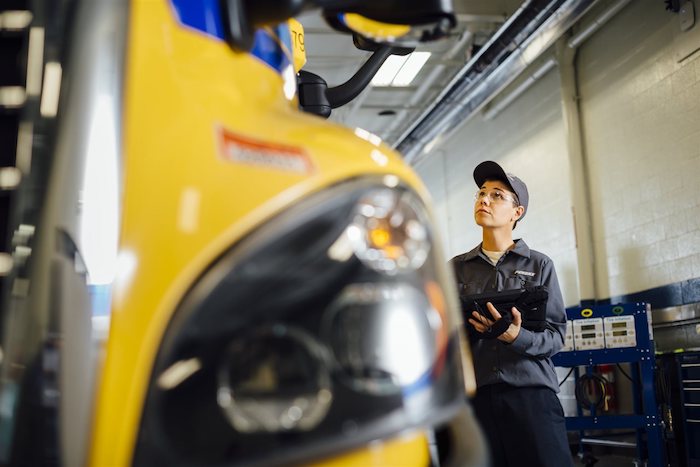If you want to buy anything at all today, you can probably find it online, purchase it, then have it shipped to your home in a matter of days — or even hours. You can track the package as it heads toward you, and you’ll probably receive a text or email, and even a picture of the item, just as it’s being delivered to your home.
What does it take for that item to get all the way to you?
Several steps — and a whole host of people who work in transportation careers.
The most visible of those jobs are the truck drivers who deliver the goods you ordered to your door. The need for those drivers has become greater than ever, thanks to the booming e-commerce marketplace. The number of current truck drivers is actually at an all-time high, totaling 3.5 million. Shipping all these goods relies on fleets of trucks with qualified drivers nationwide to get things where they need to go.
Less visible are the thousands of technicians that keep the trucks up and running, maintaining them so that they’re available to run routes around the country to keep those items on the move, day and night. Without the skill and expertise of these technicians, the fleets wouldn’t be able to function.
And even before the items make it to the trucks, warehouse workers are a vital part of this journey — they organize and keep track of all the goods, select the correct items, package them properly and then make sure that they’re all headed out to their correct destinations.
Because of this constant demand for home delivery of consumer goods, the need is greater than ever for qualified employees to fill all of these roles. Shipping goods faster than ever means that the need for larger, more efficient trucking fleets, and their supporting employees, is also greater than ever.
Penske, for example, runs a fleet of up to 328,000 trucks, employing over 36,000 associates in over 1,100 total locations.
The three most crucial positions that transportation relies are in increasing demand — and these jobs do not require a college degree.
Truck drivers
The job of truck driver has transformed over the years, becoming more reliant on advanced technologies. And newer trucks today are cleaner and more comfortable. Driving large tractor-trailers or delivery trucks is one of the largest occupations in the U.S. To work at a fleet such as Penske’s, it is required that you have a commercial driver’s license (CDL), and a safe driving record. There are dedicated truck driving schools available, and a number of qualified drivers gain valuable experience on the road while serving in the military. According to the most recent U.S. Census, at least 1 in 10 truck drivers are veterans, which is twice the rate of workers who are veterans overall.
Technicians
No positions are more important in helping to keep entire fleets up and running than diesel technicians. Diesel and body shop technicians use leading-edge diagnostic and troubleshooting technologies to problem-solve, repair and maintain today’s vehicles, which are the backbone of the transportation industry. Vocational schools nationwide offer training programs for those interested in pursuing this essential skilled position in transportation.
Warehouse
To help run warehousing and distribution systems smoothly, a large number of employees are needed around the country. Warehouse workers may be involved in multiple roles, such as order picking, using a forklift or lift-truck, packaging, taking inventory and expediting shipping and receiving of goods.
A third of today’s truck drivers work in the transportation industry, an industry that supports over 2 million jobs — occupations that include not just truck drivers, but also technicians, managers and dispatchers. All of these careers are essential to the growing needs of the transportation field, to meet the constantly increasing consumer and business demands of today. To learn more about careers in transportation, visit penske.jobs.






